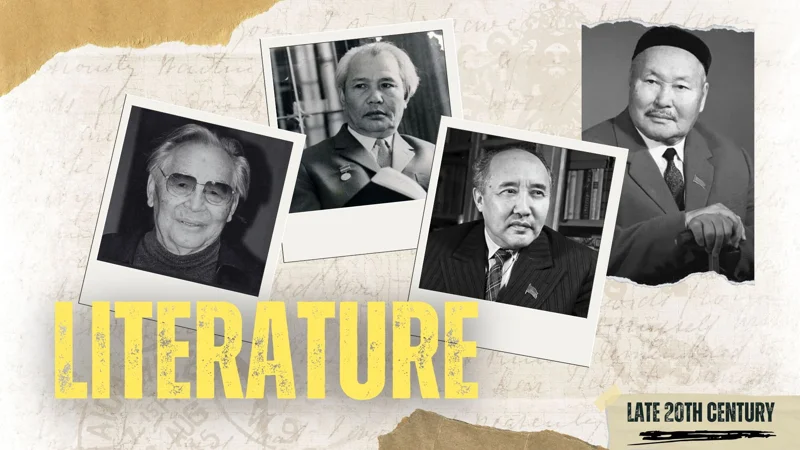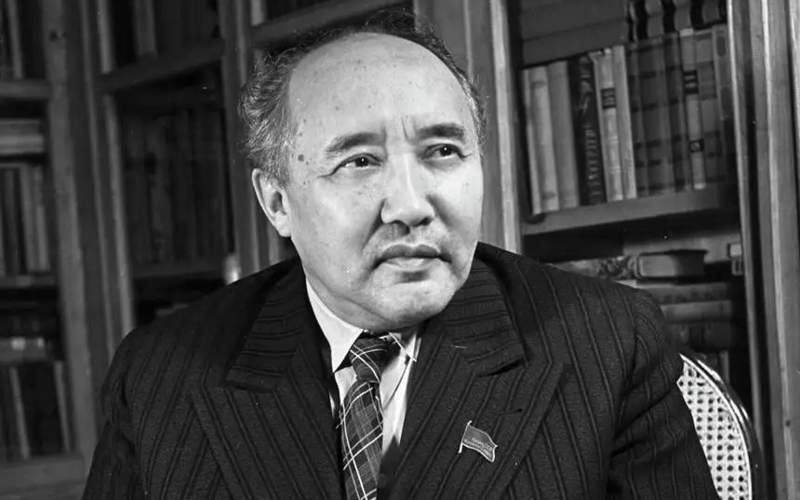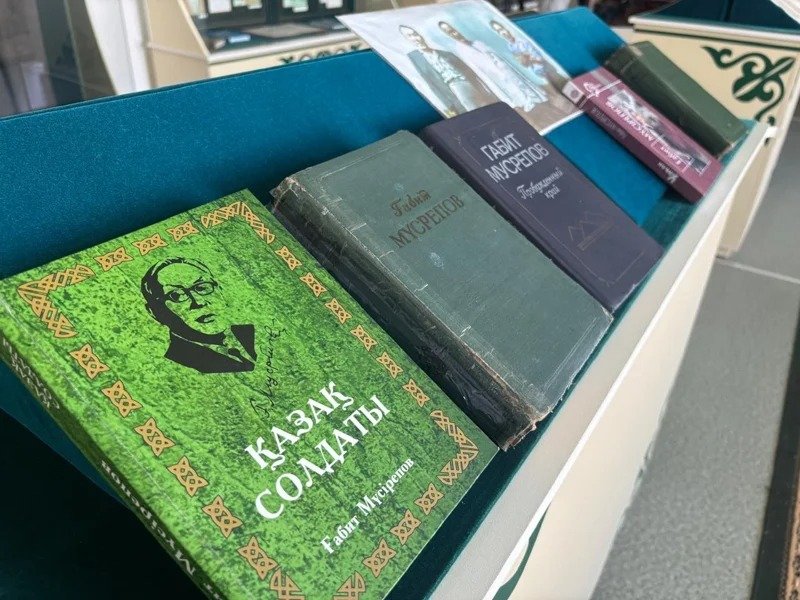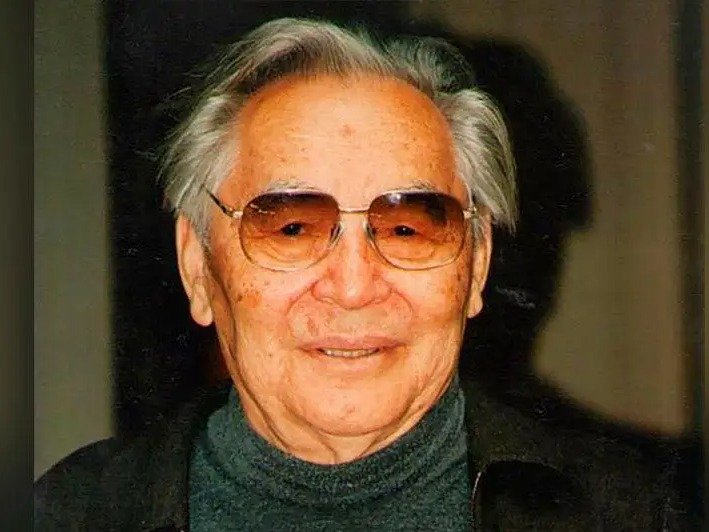Great Kazakh writers of the late 20th century
Earlier, we explored the development of Kazakh literature in the early 20th century and the outstanding writers who shaped the nation's identity during times of major change. Today, we turn to the second half of the 20th century, a period marked by the revival of national consciousness, Kazinform News Agency correspondent reports.

In the latter half of the 20th century, Kazakh writers began creating large-scale novels and expanded into dramatic arts, exploring new genres and artistic forms. Their works reflected the complex realities of Soviet life while preserving national traditions. Literature of this period often focused on themes of identity, national history, and the struggle to protect cultural heritage.
Mukhtar Auezov and the first epic novel in the Kazakh language

When discussing Kazakh literature of the late 20th century, it is impossible to overlook Mukhtar Auezov’s (1897-1961) epic novel The Path of Abai. Considered one of the greatest works in Kazakh literature, Auezov wrote it between 1942 and 1956. It was the first epic novel written in the Kazakh language and consists of four volumes.
The novel tells the story of Abai Kunanbayuly, the great Kazakh poet and thinker of the 19th century, portraying his life and personal growth against the backdrop of historical events, social conflicts, and the spiritual search of his people. The Path of Abai is more than a biography; it is a journey into the soul of the Kazakh nation.
Through Abai’s reflections on justice, education, and the future of his people, Auezov shows not only the life of one man but also the coming of age of an entire nation. This novel is regarded as Kazakhstan’s literary monument and continues to shape national identity today.
The Path of Abai has been translated into over 100 languages, earning global recognition and cementing Auezov’s status as a classic of Kazakh and world literature.
Ilyas Yesenberlin and historical books

If there is one book that helped Kazakhs rediscover their history during Soviet times, it is Nomads, the trilogy by Ilyas Yesenberlin (1915-1983).
Published in 1976, the trilogy was the first to bring the five-century history of the Kazakh Khanate (15th to 19th centuries) to mass readers, depicting great battles, alliances, and betrayals and revealing the complex reality of steppe history.
The first volume, The Charmed Sword, describes the formation of the Khanate, when leaders Janibek and Kerei united the tribes against the rule of Abulkhair. The second, Despair, focuses on the Kazakh struggle against invaders and the victories of Abylai Khan over the Dzungars. The third, Khan Kene, tells of the last khan, Kenesary Kasymuly, and his fight to preserve independence.
For readers, Nomads offers a chance to see how Kazakhs defended their land and culture for centuries, building a unique statehood in the heart of Eurasia. The trilogy became not only a literary milestone but also a cultural artifact that inspired a generation of writers and poets to reimagine historical fiction.
In 2005, a film adaptation titled Nomad was released, featuring American actor Kuno Becker as Mansur and Jay Hernandez as Yerali.
Gabit Musrepov and social realism

Gabit Musrepov (1902–1985) is considered one of the key figures in Kazakh literature of the 20th century. His work spans a wide range of genres, from epic novels and social novellas to plays and film scripts.
One of the first Kazakh novels about World War II was his Soldier from Kazakhstan. Its main character, a young man named Kairush, leaves his native village and moves to the town, soon facing the harsh realities of the front during the difficult 1930s and wartime 1940s.
In 1953, Musrepov published An Awakened Land, which became a major epic novel in Kazakh literature. In it, he portrays the life of the Kazakh people on the eve of revolutionary changes, particularly the rise of the working class during the discovery of coal deposits in Karaganda.
Later, in 1976, he published Ulpan Is Her Name, set in the late 19th and early 20th centuries. The story centers on Ulpan, a woman who embodies wisdom, kindness, and strength of spirit.
Beyond prose, Musrepov made significant contributions to Kazakh drama and literary translation. He translated works by Sholokhov and Gorky, as well as plays by Shakespeare, Ostrovsky, and Moliere, bringing the richness of world literature to Kazakh readers.
Sabit Mukanov and his portraits of the people

Sabit Mukanov (1900–1973) holds a special place in Kazakh literature as a writer who explored the fate of his people during times of great historical change.
One of his most famous novels is Botagoz, which tells the dramatic story of a Kazakh girl’s life amid social upheaval, including the 1916 uprising, the civil war, and the establishment of Soviet power. In 1958, the novel was adapted into a film that remains a classic of Kazakh cinema today.
A significant part of his work is his autobiographical trilogy School of Life, tracing the journey of a Kazakh orphan boy to adulthood. It consists of three books: Childhood, Youth, and Years of Maturity.
Mukanov also devoted special attention to Shoqan Walikhanov, the prominent 19th-century Kazakh scholar and enlightener. His novel The Flashing Meteor was the result of many years of research, portraying Walikhanov’s complex and vivid character, from his childhood and education to the development of his intellectual views and preparation for scientific expeditions.
The novel also depicts the socio-political environment of that era, as well as the customs and daily life of the Kazakh people. Originally planned as a trilogy, Mukanov was unfortunately unable to complete the third book.
Abdizhamil Nurpeisov and the tragedy of the Aral

Abdizhamil Nurpeisov (1924–2022) is remembered in Kazakh literature as the author of sweeping epics that captured the fate of his people during turbulent times. He made his literary debut with the novel Kurlandia, dedicated to the events of World War II in which he himself fought.
Nurpeisov gained international recognition with his trilogy Blood and Sweat, on which he worked from the late 1950s. This epic consists of Twilight (1961), Ordeal (1964), and Fall (1970), and tells the story of Kazakh fishermen living along the Aral Sea during the First World War and the Civil War. The trilogy portrays a harsh and complex era of struggle for survival and social justice.
Blood and Sweat became a milestone not only in Kazakh literature but also in Soviet literature. It was translated into more than 30 languages, adapted into a film, and staged as a play.
In the 2000s, Nurpeisov turned to environmental themes with his duology The Last Duty. This work explored the tragedy of the Aral Sea, which dried up within a single generation, forcing people to abandon their homes. The novel reveals their suffering and resilience. For this, he received the Sholokhov Prize.
Alongside his novels, Nurpeisov was an accomplished translator who introduced Kazakh readers to works by Anton Chekhov, Maxim Gorky, as well as plays by Alejandro Casona and Nazim Hikmet.
Earlier, Kazinform News Agency reported that The Path of Abai by Mukhtar Auezov and Officer’s Notes by Bauyrzhan Momyshuly will be translated into Uzbek in 2025.
